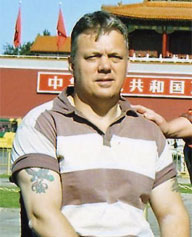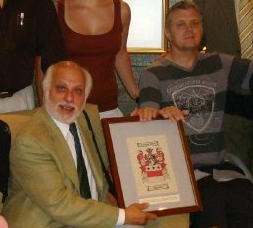Walk in the Right Direction Official Website of Michael Flounders |
 |
Stem Cell Therapy
Stem cells are the building blocks of our bodies that have not yet been assigned a specialist task.
Given particular chemical signals they can be transformed into anything from a heart cell to a nerve cell.
Adult stem cells exist in a wide range of tissues including bone marrow, muscle, the brain and the liver and they are already half way down the path to becoming a specific type of cell. As such they have restricted potential and can only give rise to a few types of cells.
The more controversial embryonic stem cell therapy, not yet practiced, would use cells harvested from embryonic tissue. They are more versatile and can be developed into almost any kind of cell type in the body.
The idea behind stem cell treatment for paralysed patients is that the stem cells can grow into nerve cells to replace those permanently damaged, bridging the gap between the severed pieces of the spinal cord.
Stem cells can be obtained from many sources, let`s say embryonic, fetal, cord blood, milk teeth, placenta, peripheral blood by leucoapheresis, bone marrow, fat tissue, and so on. But many of them are just useful to search in pre-clinical and animal studies. Thus not all what the biotechnological labs launch is to be used to treat patients.
Transplants of stem cells can be autologous (from the own patient) or allogeneic (from another human donor).
In the first case they are usually taken from the iliac crests or peripheral blood by leucoapheresis after bone marrow stimulation and no rejection reaction, infection or immunologic response would appear.
In case of cells coming from a donor (allogeneic) there are 2 main risks: a) rejection reactions therefore the need to use immunosuppressive therapy and b) tumor formation in case of embryonic stem cells.
There is a difference with fetal (not embryonic) stem cells, that is to say, cells from fetal tissues harvested between 6 and 10 weeks of gestation which probably offer a window where no tumor formation or rejection reactions are seen. Those procedures are just available in a few countries where abortion is legally performed and it is subject of many religious and ethical controversies.

